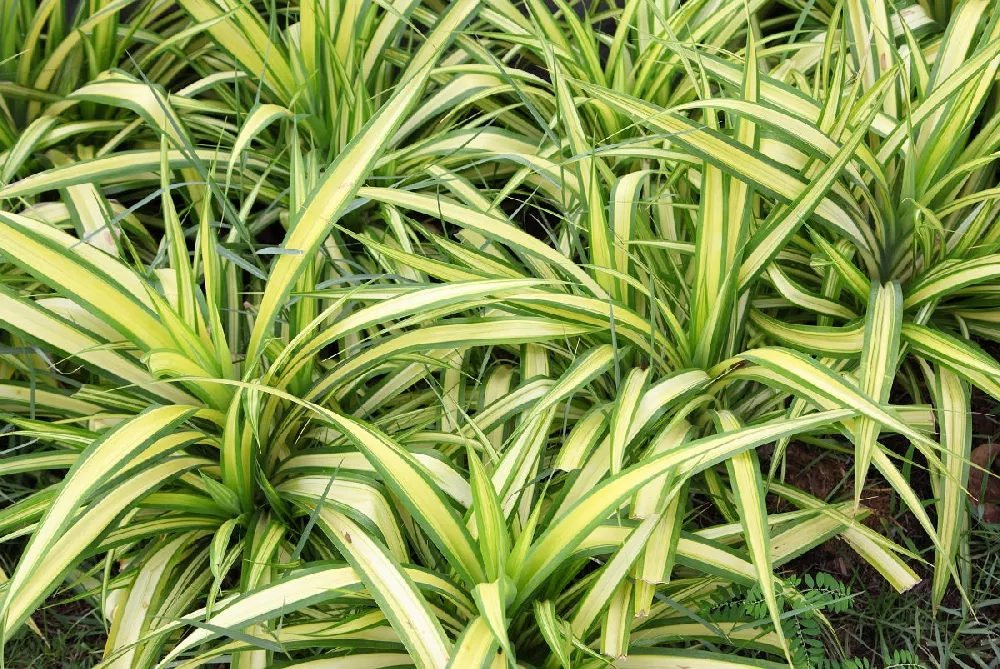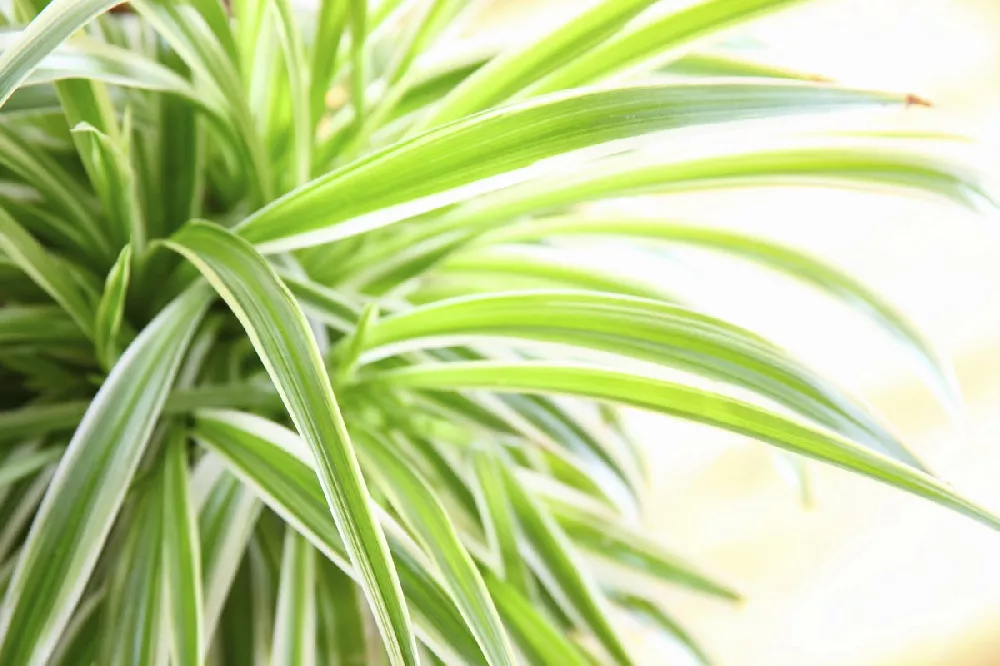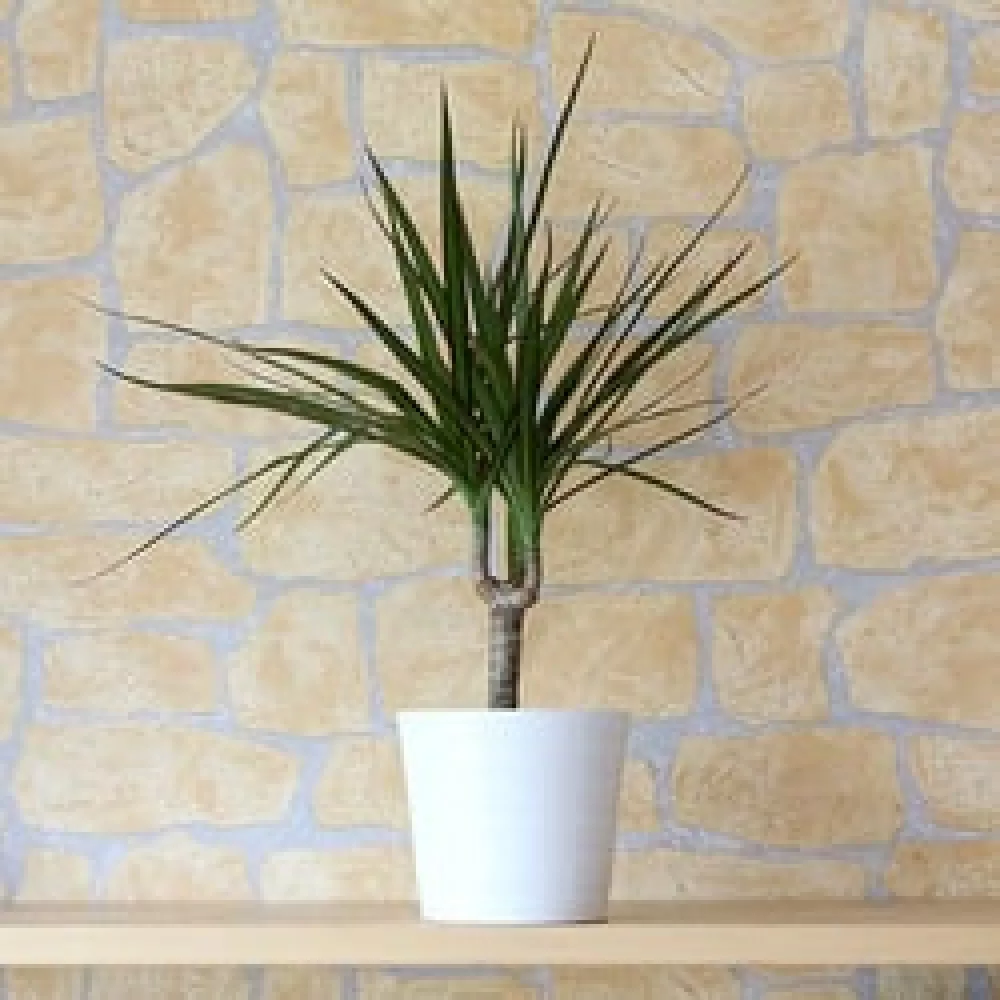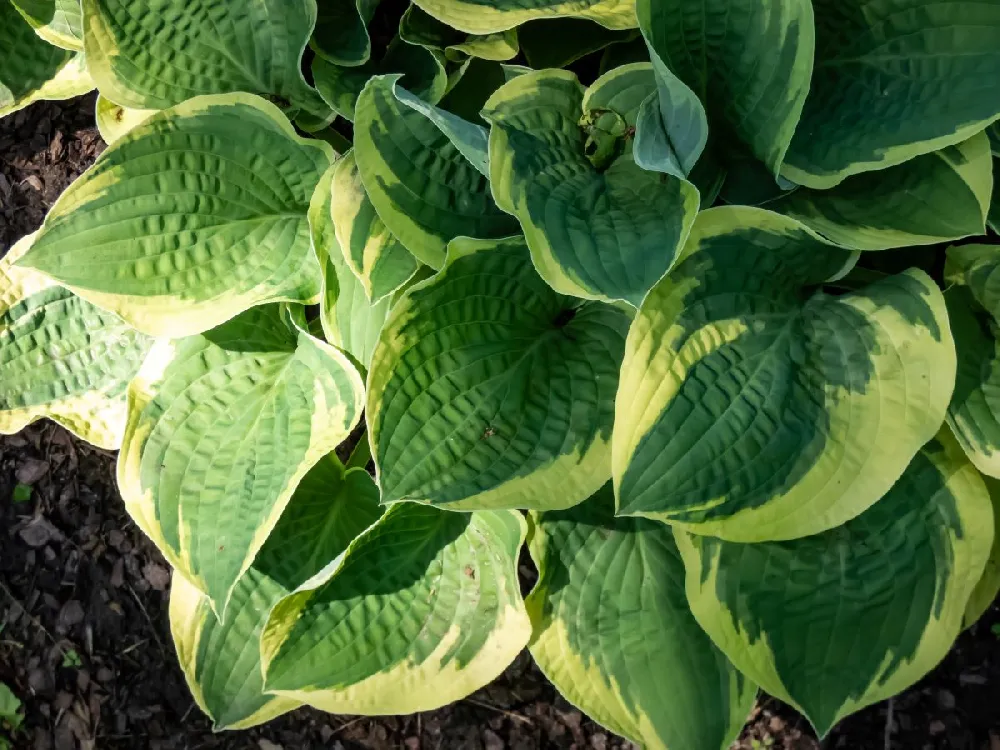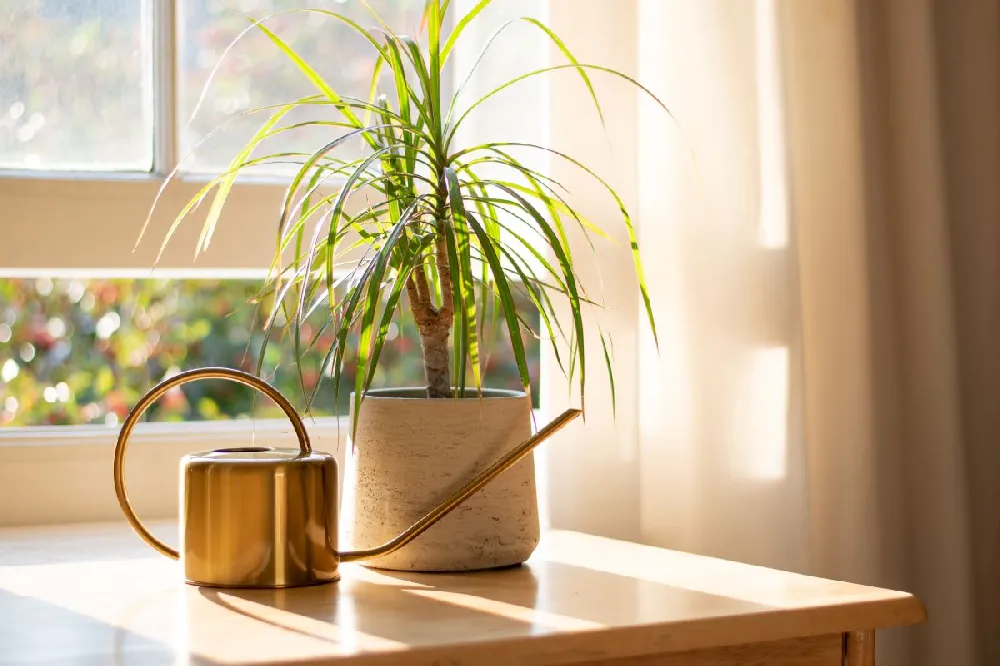- Home >
- Houseplants >
- Spider Plants
Spider Plants for Sale - Buying & Growing Guide
- Ships in 1-2 days
- 1-Year Warranty Eligible
- Pots or accessories are not included unless specified in the product options.
Shipping Details:
Once your order is shipped, you’ll receive an email with a tracking number and estimated delivery date. Most orders ship immediately, but some items are seasonal and may only ship in spring or fall. These products are noted on the website.
The spider plant, or Chlorophytum comosum, may have a name that conjures images of eight-legged arachnids, but this plant is actually one of the most graceful, eye-catching houseplants around. This green-leaved plant comes in two varieties — ‘Vittatum,’ in which leaves have an off-white center stripe, and ‘Variegatum,’ in which leaves have off-white edges. Regardless of which variety you choose, spider plants make an elegant addition to your home. Here are other interesting facts about spider plants:
- They can be grown indoors or outdoors.
- They regularly produce offshoots once they reach maturity.
- They’re known for air-purifying qualities.
Planting and Care
Planting instructions
For indoor spider plants, select a pot with several drainage holes, and fill with a well-draining, general use potting soil. Place your pot in a setting where the plant will receive bright, indirect sunlight. Too much direct sunlight can lead to scorched leaves for a spider plant. Spider plants are fast growers, so plan on repotting your indoor spider plant every other year or so.
Outdoors, spider plants will grow as perennials in USDA zones 9-11, and as annuals in cooler climates. Choose a spot that receives dappled sunlight, and plant in well-draining, slightly acidic soil.
Watering and nutrients
Spider plants are the Goldilocks of the plant world — they don’t like to be too wet or too dry, but need just the right amount of moisture. Overwatering can lead to root rot, so it’s okay to let the soil dry out in between waterings. Spider plants are sensitive to chemicals that are often found in tap water, so we recommend using filtered water for your spider plants. You can fertilize your spider plant once or twice a month during the spring and summer. Spider plants do not need to be fertilized in the fall and winter months when their growth naturally slows.
Temperature
The advised temperature for spider plant ranges between 70 and 90 degrees Fahrenheit. Spider plant can, however, tolerate temperatures as low as 35 degrees Fahrenheit without any damage to it. But it will not grow properly below 60-65 degrees Fahrenheit.
Also, temperatures above 90 degrees Fahrenheit will make the Spider plant very vulnerable to toxic micronutrients. Though Spider plant will not be damaged above 90 degrees Fahrenheit, it will boost the transpiration rate.
Humidity
A warmer environment is good for a Spider plant. To help your Spider plant thrive during the cooler months, mist it frequently. Misting will also keep the plant protected from the attacks of spider mites and other pests.
One tip you can implement to give your plant a humidity boost is putting your Spider plant in the bathroom when taking a hot shower.
Pests and diseases
In general, spider plants are not troubled much by pests and diseases. Because they prefer moderate watering, they can suffer from root rot if their soil gets too soggy. To prevent this, allow the soil to dry out between waterings, and make sure that the pot has sufficient drainage.
Common pests include aphids, mealybugs, spider mites, and whiteflies. You can remedy infestations by rinsing the plant with a steady stream of warm water, but make sure the stream isn’t strong enough to damage your plant’s leaves. You could also wash your plant with insecticidal soap.
Pruning
Healthy spider plants can grow up to 3 feet in length and diameter. The occasional pruning helps maintain a manageable size and promotes the overall health of your spider plant. Mature, healthy spider plants also regularly produce offsets, also known as “spiderettes,” which can be removed and repotted. When pruning, use sharp, clean scissors or shears. Cut any discolored, dead, or diseased leaves as needed from the base of the plant. Spiderettes should also be cut from the base of the mother plant. You should also prune the roots every other year when you repot your spider plant.
Propagation
When healthy spider plants reach maturity, they typically produce offsets (also known as “spiderettes” or “pups”) from which you can grow new spider plants. These long-stemmed offshoots have tiny white flowers. If you plan to remove and repot pups, wait until they’re about two inches in diameter, and then cut from the base of the mother plant with clean shears or scissors. You can also set the still-attached pup in a pot of soil next to the mother plant, and cut them loose once they have rooted themselves in the new pot.
Follow this step-by-step guide to properly propagate your Spider plant.
How to grow a plantlet in soil:
1. Prepare a pot of about 4 inches wide that has draining holes at the bottom with well-draining potting soil.
2. Wet the base of the plantlet and place it into the soil.
3. Cover the base with more soil.
4. To boost root growth you can wet the base of the plantlet with rooting hormone.
5. After planting the plantlet, water it so that the soil becomes moist.
6. Place the plantlet or the baby Spider plant under indirect sunlight. Full sunlight can kill it. It’s best to keep it away from direct heat, too, so that baby plants can grow their roots very well.
Propagating in water:
1. Take a small jar or bottle or cup with water. Prepare or ready the jars of water 24 hours before planting the plantlets. Let the water sit for 24 hours in their jar.
2. After removing the plantlet, place them into the water. Change the water every day. First, remove the plant and then replace the water with fresh water. When removing water from the jar every day, be sure to check the base of the plantlet for any kind of mold growth. If you see any mold, wash it off with water. Do not rub it with your hands to avoid damaging the roots. Simply rinse it under a running faucet.
3. Keep the plants in the water until grow to the mouth of the cup, bottle, or jar. When they have visible roots, plant them in soil following the steps above propagating in soil.
Common Problems
Tipburn
This is commonly seen in Spider plants. The leaves will have necrotic tips or white areas. These areas might turn reddish or brown due to fluoride toxicity or gray due to boron toxicity.
The solution is to use distilled or purified water.
Bleached Foliage
This can be due to excessive light or high temperatures. The leaves, especially in the center, will have a bleached out area. The color of those areas is usually yellow, gray, or white.
The best way to solve this problem is moving the plant. Try someplace semi-shaded, a little cooler than your average temperature.
Spider Plant Species
Spider plant can adapt to almost any situation. That is why it is one of the best foliage choices to grow indoors. There are more than 200 species of Chlorophytum. Here are some of the most common types of spider plant.
Chlorophytum Comosum ‘Vittatum’ (Variegated Spider Plant)

One of the most recognized Spider plants is Vittatum. It has a broad white stripe and slightly curved leaves colored medium green. It’s a great-looking hanging plant. See more photos.
Bonnie (Chlorophytum Comosum)

Bonnie is similar to Vittatum, but the leaves are more curled than the Vittatum. It’s perfect for small rooms, such as a bathroom or even a small balcony. It grows very quickly. Because most of the time, Bonnie is placed in a bathroom, some call it “toilet plant.” They do not need much light. Plus, they purify the air.
Zebra (Chlorophytum Laxum)

This is a fast-growing Spider plant with yellow edges that eventually turn white. It looks very good in small hanging pots. It’s perfect for beginners.
Variegatum (Chlorophytum Comosum)

Also called Reverse Variegated. This is one of the most popular varieties of the Spider plant. It is just an opposite of Vittatum (Chlorophytum Comosum). It has arching leaves with white edges, and dark green stripes in the middle. It is very attractive and also has a wonderful variegation, but you have to give it a lot of bright sunlight or else it might lose its variegation.
Hawaiian Spider Plant (Chlorophytum Viridescens)

This is one of most fascinating plants. Hawaiian spider plant is also known as Golden Glow. It’s small in size, and it has green leaves with rich champagne tones. It’s easy to propagate and is a perfect addition to a living room.
FAQs
How big do spider plants get?
Spider plants are only limited in size by their containers. These fast-growing plants can reach two to two and a half feet in width and two to three feet in length in large pots, hanging baskets, or when planted outdoors. For indoor spider plants, repotting every other year is recommended to accommodate growth. However, spider plants kept in smaller containers will typically reach one to two feet in length.
How long do spider plants live?
These hardy houseplants can live for a long time. The typical lifespan of a healthy spider plant is about 20 years, although some gardeners have kept their spider plants alive for over 50 years. These plants can withstand a fair amount of neglect, but thrive with moderate attention. As a native of the African subtropics, frost and temperatures below 50 degrees Fahrenheit are the spider plants biggest enemies.
How much sunlight does a spider plant need?
With spider plants, the question isn’t so much how much light do they need, but what type of light are they receiving? Spider plants can survive in light ranging from semi-shade to partial direct sunlight, but do their best when they receive bright, indirect sunlight. The only type of light you want to avoid with your spider plant is hot, direct sunlight, which will scorch the plant’s leaves, causing the tips to turn brown.
Are spider plants toxic?
Spider plants are not toxic for humans or any common household pets, including dogs and cats. However, spider plants do produce chemicals that have mildly hallucinogenic effects on cats, similar to catnip, so it may be best to keep them out of reach of any feline friends in your home.
Compare Similar Products
Customer Reviews
 The Spider plant is all yellow
The Spider plant is all yellowThe Spider plant is all yellow. I'm hoping it comes back from the shock of being mailed.

